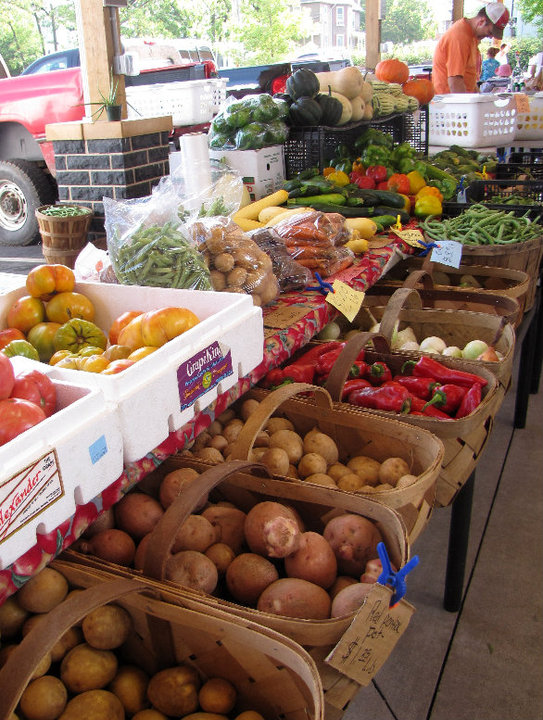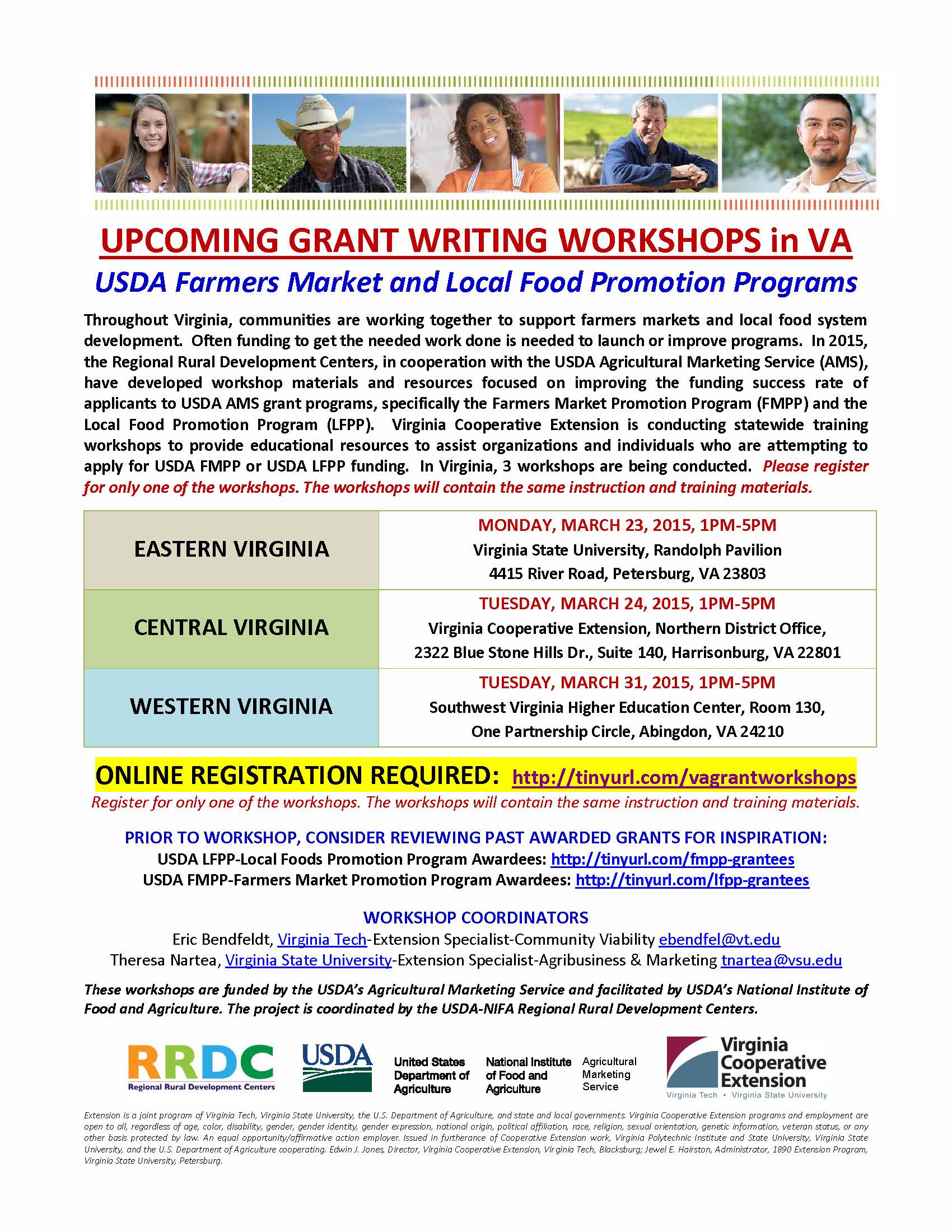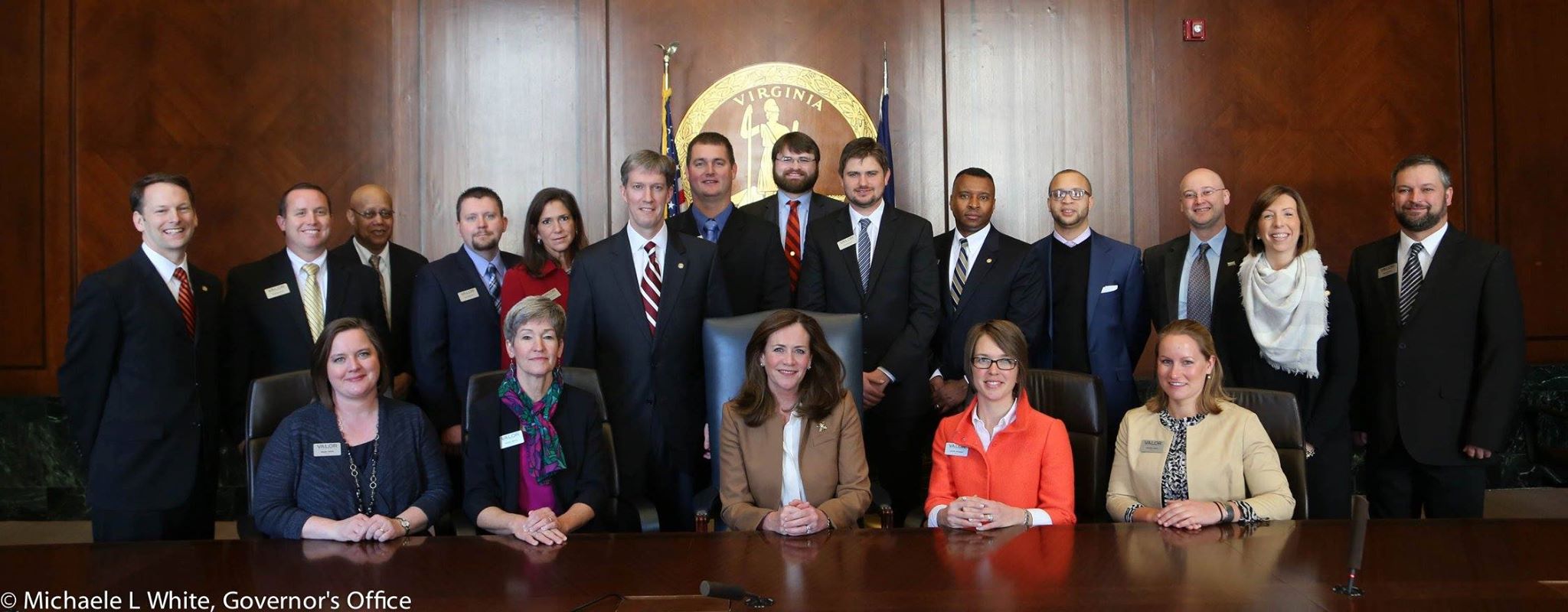Agriculture is Virginia’s largest industry with an annual economic impact of $52 billion, creating nearly 311,000 jobs for the state (VDACS). With such a strong agricultural industry, why is it important to continue to promote farmers markets and local foods in Virginia?
 Today, many people are two or three generations removed from farming and actual day-to-day food production. Farmers markets are often the first farming and agricultural enterprise people who did not grow up on a farm relate to in a real and personal way, particularly as they get to know and interact with market growers and vendors on weekly visits. Of course, more can be done to educate people about agriculture and the challenges of farming as a livelihood, but these market relationships are a good starting point for additional conversations.
Today, many people are two or three generations removed from farming and actual day-to-day food production. Farmers markets are often the first farming and agricultural enterprise people who did not grow up on a farm relate to in a real and personal way, particularly as they get to know and interact with market growers and vendors on weekly visits. Of course, more can be done to educate people about agriculture and the challenges of farming as a livelihood, but these market relationships are a good starting point for additional conversations.
Farmers markets showcase the sights, smells and sounds of the community, while giving a glimpse into agriculture and local food and farm production. Markets also encourage social and community interaction. A study by the Project for Public Spaces reports that customers have on average 10 more conversations at a farmers market than at a supermarket.
Okay, so why promote locally grown Virginia foods? With the competitive nature of agriculture, it is important to optimize and utilize all markets available to Virginia producers from local and regional scale to national and international scale. Do you know that Virginia households spend over $20 billion buying food each year, including about $12 billion to eat at home! Additionally, tourists to Virginia spend another $5 to 6 billion purchasing food. However, even with Virginia’s strong and diverse agricultural economy, Virginia producers are only able to capture a small portion of these food dollars. Also, it is hard to know what ingredients are actually grown and procured in Virginia.
Therefore, promoting local foods is about trying to capture some of the food dollars that are already out there — even if it is a small bump in the current percentage and amount. The definition of local food can be a bit confusing in how to define a specific geographic boundary, but local food is more about relationships and connections to farming; the story and community; freshness and taste; local economies; seizing the opportunity; enhancing resilience and diversity.
 In Virginia, there are many people who have good ideas to promote farmers markets and local food system development, but a continuing issue is finding funding to get things moving in the right direction. Also, writing a grant can seem daunting. Virginia Cooperative Extension, in partnership with USDA-Agricultural Marketing Service (AMS), Regional Rural Development Centers and Penn State University, is offering three upcoming grant writing workshops in eastern, central, and western Virginia. The workshop materials and resources have been developed and focused to improve the funding success rate of applicants from Virginia and other states to USDA-AMS grant programs, specifically the Farmers Market Promotion Program (FMPP) and the Local Food Promotion Program (LFPP).
In Virginia, there are many people who have good ideas to promote farmers markets and local food system development, but a continuing issue is finding funding to get things moving in the right direction. Also, writing a grant can seem daunting. Virginia Cooperative Extension, in partnership with USDA-Agricultural Marketing Service (AMS), Regional Rural Development Centers and Penn State University, is offering three upcoming grant writing workshops in eastern, central, and western Virginia. The workshop materials and resources have been developed and focused to improve the funding success rate of applicants from Virginia and other states to USDA-AMS grant programs, specifically the Farmers Market Promotion Program (FMPP) and the Local Food Promotion Program (LFPP).
The workshops are FREE of charge and all are welcome to register and attend these workshops. Please share the attached flier and announcement with producers, farmers market managers, organizations that would be interested in learning more about and submitting grant applications to USDA’s Agricultural Marketing Services’ (AMS) Farmers Market and Local Foods Promotion Programs.
ONLINE REGISTRATION REQUIRED: http://tinyurl.com/vagrantworkshops
Participants should register for only one of the workshops. The workshops will contain the same instruction and training materials
Producers and attendees can review past awarded grants for inspiration and ideas:
USDA Farmers Market Promotion Program (FMPP) Awardees: http://tinyurl.com/fmpp-grantees
USDA Local Foods Promotion Program (LFPP) Awardees: http://tinyurl.com/lfpp-grantees
Again, the workshops are FREE and all are welcome to attend.



